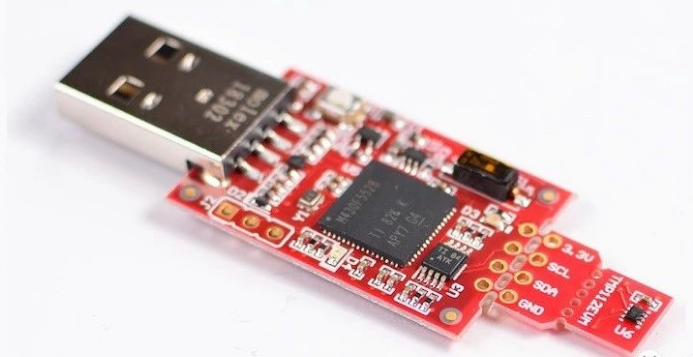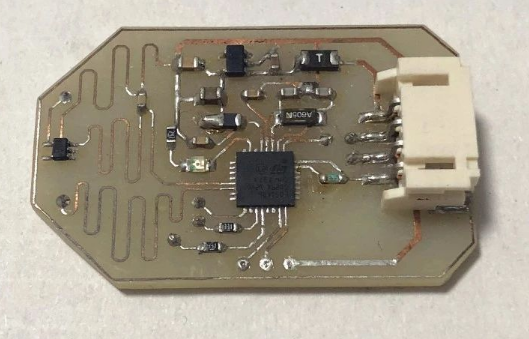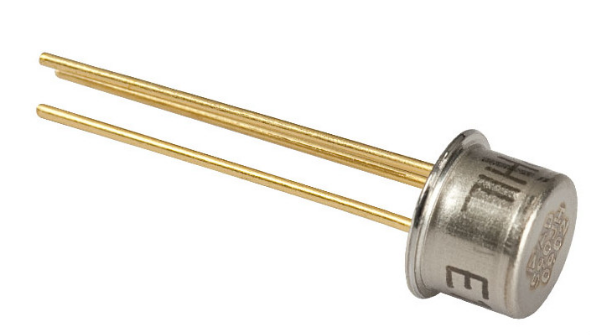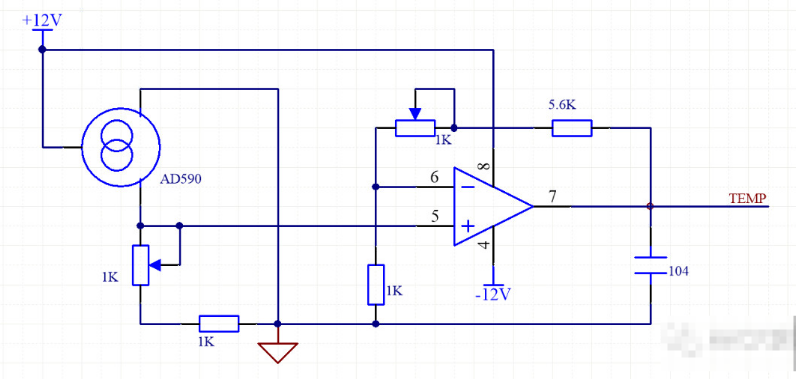01 DS18B20
The main reason for putting the DS18B20 first is that it is so commonly used that when I think of the temperature sensor, the first thing that flashes through my mind is it. It is almost a temperature sensor that many electronic engineers will touch at the beginning. Of course, there are some reasons why it is so popular. Let me explain it slowly.
DS18B20 is a temperature sensor launched by Dallas Company in the United States. We should not be unfamiliar with Dallas, which has launched many star products, including DS18B20, DS12C887, DS1302 and DS3231 high-precision RTC clock chip used in our matrix LED clock. When you search the datasheet of these chips, you will find that in addition to the Dallas logo, there is the Maxim logo, because it was acquired by Meixin in 2001 and is now a wholly-owned subsidiary of Meixin.
DS18B20 can be said to have many advantages, small size, wide temperature measurement range – 55 ℃~+125 ℃, accuracy of – 10 ℃~+85 ℃ can reach ± 0.5 ℃, resolution can be set to 12 bit, and simple wiring without peripheral circuits. You can’t have both fish and bear’s paw. The single bus connection is simple, but its working time sequence is very complex. The signal transmission is only subtle, and a slight carelessness (such as improper use of the delay function) may lead to chaos in the working time sequence of the entire sensor. Therefore, when writing the control program of DS18B20, be sure to understand the working sequence and use the appropriate delay function. Previously, I used it in some low-power systems that ran away from RTOS, which made software work more difficult. This also led me to gradually move away from it and replace it with other solutions.

02 Thermistors and thermocouples
Putting thermistors and thermocouples together does not mean that they are one thing. They are two different devices. Putting them together is because they are somewhat similar in use. Both need to add some temperature measuring circuits to work. As its name implies, thermistor is a kind of component whose resistance value will change with temperature. According to the temperature coefficient, it can be divided into positive temperature coefficient thermistor (PTC) and negative temperature coefficient thermistor (NTC). The higher the PTC temperature, the higher the resistance, and the higher the NTC temperature, the lower the resistance. The advantage is that it is cheap. I used it in some projects that need to control costs and have ADC. However, if there is no spare ADC in the project or no ADC at all, it is not cost-effective to add an ADC for it alone.
The temperature measurement principle of thermocouple is to use the thermoelectric effect of conductor. In short, two different conductors or semiconductors are welded together to form a closed loop. When there is a temperature difference between two points, a thermoelectric electromotive force will be generated, and there is thermal current flow in the loop. The thermoelectric potential increases with temperature. The thermoelectric potential is related to the conductor material and the temperature of two points. When the material is fixed, the thermoelectric potential has a fixed functional relationship with the temperature. Using this functional relationship, we can measure the temperature. Different materials have different temperature ranges. The advantage is that the measurement range is wide. Common thermocouples can continuously measure from – 50~+1600 ℃. Some special thermocouples can measure from – 269 ℃ (such as gold iron nickel chromium) to+2800 ℃ (such as tungsten rhenium).
The same disadvantage of thermistors and thermocouples is that they need additional measuring circuits, which is more troublesome than the DS18B20 mentioned above and these integrated sensors mentioned later, and the accuracy is general. If you want to achieve high accuracy, you need to add some calibration and compensation, which will increase some costs.
03 TMP112
I mentioned the complexity of the DS18B20 when I mentioned it above. Later, I replaced it with TMP112. This is a digital temperature sensor launched by Texas Instruments, and the interface is I two C. The temperature measurement range is – 55 ° C~+150 ℃, and the accuracy is 0.5 ° C (maximum) within the range of 0 ° C to+65 ° C. It is a good substitute for thermistor. Another particularly attractive advantage of this temperature sensor is its power consumption, which is also an important reason for my use of it in projects. Most of my club’s projects are low power consumption projects. Two batteries work for one or two years, so its 10uA working current and 1uA turning off current are very attractive. There is no need to add external switch control, You can achieve low power consumption.

But as time went by, I abandoned it and used a new temperature sensor. The main reason for abandoning it was its packaging. It has only one package, SOT563, with a size of 1.6mm * 1.2mm. It is too small and welding is troublesome. So I replaced it. Which chip is it this time?
04 LMT84 and TMP235
LMT84 and TMP235 are also temperature sensors launched by Texas Instruments. Different from the TMP112 digital temperature sensor above, they are both analog temperature sensors. LMT84 was the first one I used for the oil detection sensor. The biggest difference between the oil drilling detection sensor and the ordinary sensor is the ambient temperature. The temperature is extremely high when it is thousands of meters underground. The minimum index is required to be temperature resistant to 150 ° C. At this time, the temperature sensor in the instrument is particularly important, It is the basis for temperature compensation of other sensors. I chose LMT84 at a certain risk. I did a lot of experiments in the high temperature test box, and finally determined that it can withstand the temperature to 150 ° C and work stably. There was no problem when it reached 175 ° C in a short time. TMP235 was later. I found it when I accidentally browsed TI’s official website, and then I immediately went to Dejie Electronics to place an order. The reason for choosing it is that the precision is higher than LMT84 (TMP235A2 ± 0.5 ° C), but the price is almost the same. I have used it in some recent projects.

Test board made in the same year
The main reason why I am keen on TI’s analog temperature sensors is that they are easy to use. They are simpler than those mentioned above. As long as there is ADC in the system, they can be used directly. There is no need for complex calibration procedures in the software. Two or three formulas are all solved. In hardware, only one resistance and one capacitance are needed to filter the wave.

05 AD590
The AD590 is a monolithic integrated temperature sensing current source at both ends from ANALOG DEVICES, whose output current is proportional to the absolute temperature. In the range of 4V to 30V supply voltage, the device can act as a high impedance, constant current regulator with a regulation coefficient of 1 µ A/K (note Kelvin).

A big advantage of the AD590 is its stability. It is a temperature sensor widely used in oil exploration and other harsh areas. It is more troublesome to use than the two sensors I mentioned above. Its temperature measurement range is very wide. The official nominal temperature is – 55 ℃~+150 ℃. In practice, I have done a lot of experiments. It can work stably to 175 ℃ (with other high-temperature resistant devices), which is why it is chosen in these high-temperature occasions. Here are the circuits I use.

06 summary
Because of the length of the article, I will introduce here. In fact, there are many excellent temperature sensors that I have not introduced. You can add them in the message area, so that we can learn and progress together. It may seem like a trivial matter to choose a temperature sensing product, but because of the variety of products available, it is not so easy to choose a sensor with a price that meets the budget, functions that meet the requirements, and simple and convenient design.
